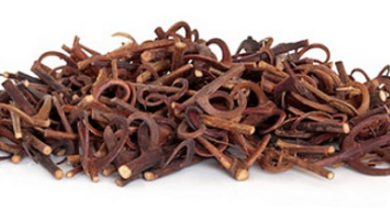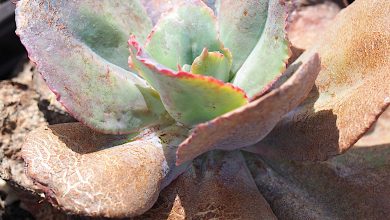gummosis
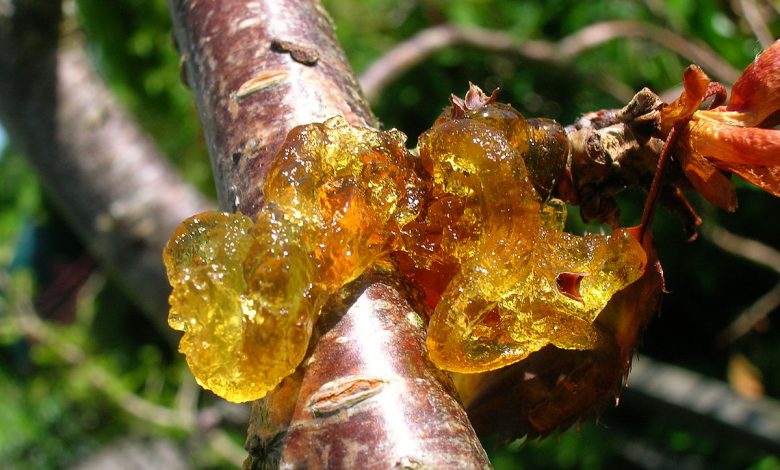
Gummosis refers to the exudation of sap or gum from a tree. This behavior is very common in stone fruits such as apricots, peaches and plums.
Gummosis is a symptom of a disease caused by various pathogens that, if not treated in time, can be terrible for your fruit trees.
The most common cause of gummosis is a fungus originally called Cytospora and now called Leucostoma.
This fungus is very opportunistic. What we mean is that it infects the easiest targets, like weakened trees. It attacks both a wound and a stressed tree.
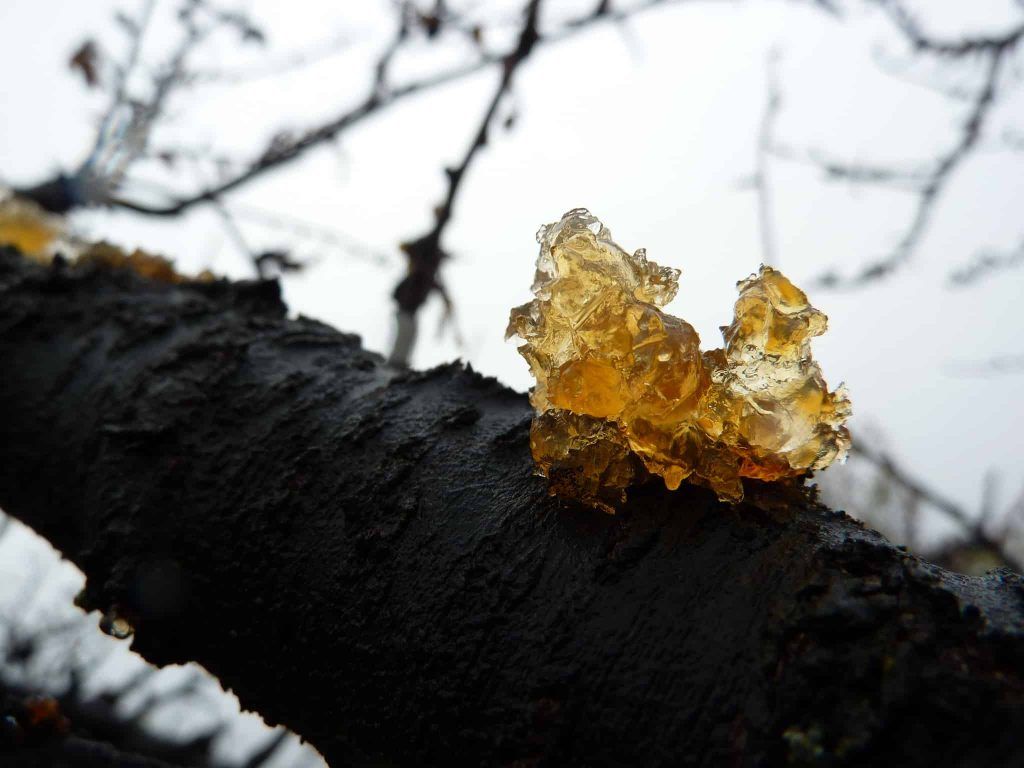
Symptoms and signs of gummosis
- One of the first symptoms of Phytophthora gummosis is sap coming out of small cracks in the infected bark, giving the tree a bleeding appearance.
- The gumming can be removed by heavy rain.
- The bark remains firm, dries out, and eventually cracks and peels off.
- The lesions spread around the circumference of the trunk, slowly girdling the tree.
- The decline may occur rapidly within a year, especially under conditions favorable for disease development, or it may occur over several years.
Comments about this disease
Phytophthora fungi are present in almost all citrus orchards. Under humid conditions, the fungi produce large numbers of motile zoospores, which are sprinkled on tree trunks.
The Phytophthora species that cause gummosis grow rapidly in cool, moist conditions. Hot summer weather slows the spread of the disease and promotes drying and healing of lesions.
Secondary infections usually occur through the lesions created by Phytophthora.
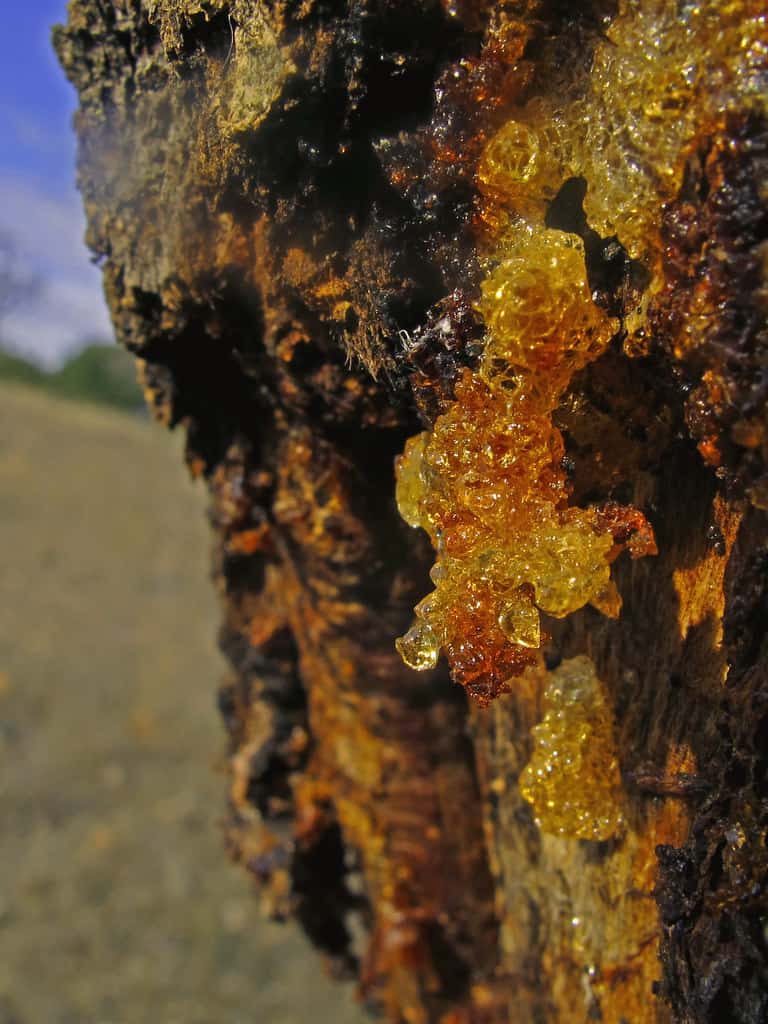
What causes gummosis? Two species of Leucostoma infect fruit trees
Cytospore canker is caused by one of two different fungi. The fungus overwinters in dead wood or sunken lesions. Curly orange fungal strings release spores in spring, which are distributed by wind and rain splash.
Once the spores land on a host tree, they enter through insect-boring wounds, mechanical injuries, or winter injuries. The symptoms are more frequent during the hot and humid spring, since the humidity facilitates its entry into the wounds.
Trees that have just emerged from dormancy are the most susceptible to the pathogen.
Two species of Leucostoma can attack. Leucostoma persoonii is most likely to infect apricots, plums, peaches, nectarines, and cherries grown at low altitudes. This species is more problematic in hot climates.
In contrast, Leucostoma cincta is more likely to attack apples and cherries in cooler areas, such as high-elevation orchards.
Both species of fungi are widespread in the United States and also in British Columbia and Ontario (Canada). They are also known to cause problems in South America, Europe, and Japan.
How to Diagnose Gummosis Due to Leucostoma Canker
Your tree will show symptoms such as crown dieback and tree feathering. And it will produce a gummy substance.
The trunk of a cherry tree infected by Leucostoma persoonii showing signs of Leucostoma canker and oozing sap.
The gum produced by Leucostoma fungi has a dark amber color. Scrape off the bark and look at the phloem below. It will be cinnamon brown.
Normally, the fungus grows during favorable times such as winter and spring. When the tree begins to grow actively, the infection is barricaded until it loses resistance again in the fall. You can see this pattern as bands of lighter and darker colored tissue.
To distinguish Leucostoma canker from other causes of gummosis, you should look for its fruiting bodies, which are bumps on the surface of the woody tissue that look like small black pimples.
These fruiting bodies can produce thousands of spores, and those of Leucostoma persoonii can travel up to 80 meters.
How to prevent gummosis?
Fertilization and optimal care
Since the main causative agent of apricot, peach and plum gummosis attacks weakened trees, do everything you can to keep your fruit trees healthy with optimal fertilization, irrigation and nutrition.
You should consider fertilizing with nitrogen in late winter or early spring. This will prevent your trees from producing growth that could be damaged by cold in the fall.
Precisely prune and remove damaged tissue
Be very careful when pruning. Make the right cuts and not when there is high humidity. It is important not to leave stumps or flat cuts and not to make flush cuts.
Remove infected branches by carefully pruning away healthy wood. If possible, do this in hot weather so the wound heals as quickly as possible.
Sterilize your tools with 10% bleach between cuts. It may not be possible to prune through all the damage if the fungus has spread.
Protect from sunburn
Protect the bark of your trees from sunburn during the winter. For this, you have two options.
- One is to paint the trunk with half white latex paint and half water.
- Your other option is to apply a white tree wrap from December through March.
Protects against rodents and insects
Protects from rodents and insects so that they do not cause injuries to your tree. Some farmers spray insecticides to prevent borers from making holes in trees.
Drains the water from the base of the tree
You must make sure to prevent the cold from damaging the top of the tree. To do this, drain the water from the base of the tree.
Chemical controls for gummosis
If you live in an area where this pathogen is widespread, you should treat your tree with chemicals as a preventative measure.
Apply captan, thiophanate-methyl, or lime sulfur (Bordeaux mix) in 50% latex or kaolin clay to freshly cut pruning wounds. Do not apply copper hydroxide, as it has been shown to be toxic to trees.
Lime sulfur mixed with white latex paint is used to protect a large area of pruned branches from infection.
Use a lime-sulfur solution (Bordelaise mixture) mixed with white latex or kaolin clay to screen freshly pruned areas of infection.
If your trees are part of an organic program, using lime sulfur is safe.
Keep a close eye on your trees
Try to make sure that your tree is not stressed and does not have any injuries.
Leucostoma canker is common on patio trees, so be very careful when pruning them. You can apply a chemical treatment after pruning, so that the fungus cannot enter through the pruning wounds.
Watch for gummosis. If you see it, try to determine if it is due to a fungal injury. If so, quickly prune the damaged tissue before it spreads.
And if you lose a tree to this fungus, eliminate it completely by burning it. The fungus will continue to live in the dead tissue and continue to produce spores to infect other trees.
fruit tree gummosis
Gummosis is a term that refers to the presence of amber-colored sap oozing from the trunk or branches of a tree. It is important to understand that the term «gummosis» is a symptom, not a cause, of a tree ailment.
Anything that stresses the tree can be a causal factor. It is necessary to determine the cause of the stress to mitigate future damage to the tree.
Gummosis has several causes
- Environmental stress: Compacted soils, poorly drained soils, light sandy soils, use of weeds and feed or other herbicides in close proximity, and winter injury can all contribute to the cause of gummosis, as can lack of irrigation under the glass
- Solution: Correct any environmental stresses you can. Avoid planting in heavy or light sandy soils that do not retain moisture. Water under the canopy as needed. Don’t plant fruit trees in thin, poor soil.
Trunk damage from mowers and string trimmers, brush with other animals, improper pruning cuts, or pruning in the fall and winter, when the disease is active, can contribute to the cause of gummosis.
Injuries to the tree provide an opportunity for the disease to penetrate the tree. Unfortunately, once the damage is done, there is little that can be done to reverse it.
Trees do not regenerate vascular tissue once it has been destroyed. It is important to keep the tree as healthy as possible through proper pruning, fertilization and watering practices. These practices can prolong the life of the tree.
Pseudomonas bacterial canker affects weakened trees.
Entry is usually through wounds or pruning cuts. Bacteria can also enter the tree through borer holes. Symptoms vary, but usually appear in the spring when infected twigs die.
Cankers (sunken tissue) may appear on larger branches and trunks. Gummosis has a characteristic sour odor when caused by bacteria.
The sap will be clear, with no sawdust or residue. There may be an increase in the formation of water shoots (shoots that grow from the base of the trunk). Bacterial canker can also cause leaf spots that start as a dark purple lesion, and then a «shot hole» condition when the center falls off.
Can gummosis be eaten?
Gummosis can be removed with a brush and superficial damage to the pulp can be trimmed away. Although gummosis causes the fruit to have an ugly appearance, it can be eaten without problems.
What causes peach gummosis?
It is a fungal disease caused by Botryosphaeria dothidea.
The fungus is the infectious agent, but the disease occurs when the peach tree is damaged. The lesions may be biological in origin, such as perforations by peach tree borers.

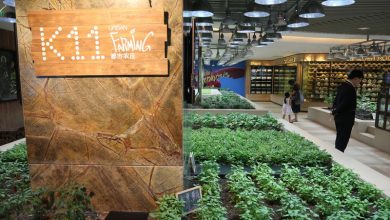
![Photo of Vine Treatment: [Pruning and Sulfur Application]](https://www.complete-gardening.com/wp-content/uploads/2022/08/vine-treatment-pruning-and-sulfur-application-390x220.png)
